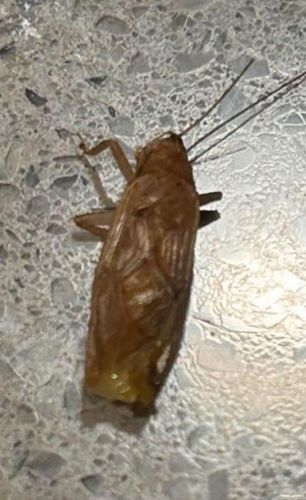Cockroach (likely American Cockroach or a similar large species)
Scientific Name: Periplaneta americana (American cockroach, a common example for this appearance)
Order & Family: Blattodea, Blattidae
Size: 2.5 to 5 cm (1 to 2 inches) in length, depending on the species. The one in the image appears to be on the larger side.

Natural Habitat
Cosmopolitan, found worldwide, especially in warm, humid environments. They inhabit dark, secluded areas such as cracks and crevices, under sinks, behind appliances, in basements, sewers, and drains, particularly where food and water are readily available.
Diet & Feeding
Cockroaches are omnivorous scavengers. They eat almost anything, including food scraps, decaying organic matter, paper, fabric, glue, and even other dead insects. They are particularly attracted to starches, sweets, fatty foods, and meat.
Behavior Patterns
Cockroaches are primarily nocturnal and gregarious. They can run very quickly and will scatter when disturbed. They communicate using chemical trails and pheromones. Their lifecycle involves incomplete metamorphosis with egg, nymph, and adult stages.
Risks & Benefits
Risks: Cockroaches are considered pests. They can contaminate food and surfaces with bacteria (e.g., Salmonella, E. coli), allergens, and protozoa, leading to food poisoning, asthma, and other allergic reactions. Their presence can also indicate unsanitary conditions. Benefits: In their natural outdoor habitats, some species contribute to decomposition and nutrient cycling.
Identified on: 9/3/2025